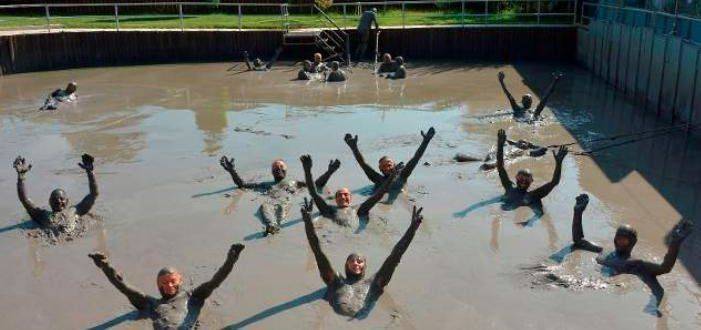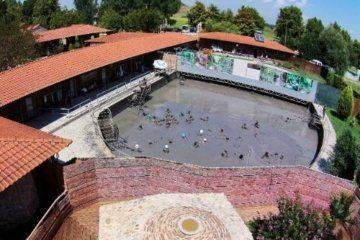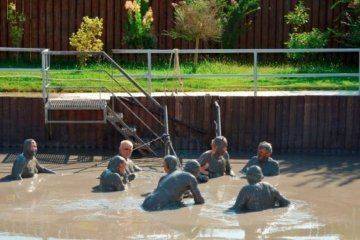
The famous one ancient city of Philippi and the its wider area it is not only a historical site, now included in the Unesco List of World Heritage Sites. Krinido mud baths
It is a place where Christianity meets ancient Greek culture and the human body is regenerated through an ancient material, mud. In Philippi, the healing clay combines perfectly with the thermal water to provide the necessary care and treatment that modern man needs.
The beneficial properties of clay or mud as the locals call it, in the human body had been known since the Ottoman years and even earlier. Grandma Evdokia remembered until the last years of her life testimonies of her own grandmother, Marouda, which traveled from generation to generation according to which a breeder in the area of today's Krinides had a cow that was struck by an illness and was about to die. One morning he found his cow floating in the mud. With difficulty he got her out and a few days later the cow had recovered.

Today, more than eight decades, in a verdant area that impresses the visitor, the Krinido mud baths operate, at the seat of the former Municipality of Philippi and now the seat of the Municipal Unit of Philippi of the Municipality of Kavala. Over the years, thousands of people, Greeks and foreigners, of all ages have accepted the beneficial properties of the clay and enjoyed the well-being provided by the mineral water.
Krinido mud baths
The Krinido Clay Spa, or mud baths for the locals, has been for hundreds of years a "sustainable laboratory of nature" that with amazing precision prepares this precious material. In the past, geological, ecological, biological, chemical conditions and complex physical mechanisms were favorable as they created the appropriate environment from which and in which healing clay was naturally prepared and matured.
Nowadays, the state-of-the-art facilities of the Krinion Clay Therapy Center, which operate under the responsibility of the Municipal Public Benefit Enterprise of the Municipality of Kavala, DIMOFELEIA, are a fully organized area for clay therapy as well as hydrotherapy, in the impressive and fully renovated post-Byzantine bath, giving visitors the opportunity to follow a comprehensive treatment program according to each person's personal needs.

Clay therapy is based on the use of so-called "mature" clay. The application of clay can be total or partial, by immersing the body in it or by applying it. The therapeutic action of the clay is twofold: it exerts a local (on the skin surface) and general action. The action of clay therapy is mainly due to three factors: mechanical, thermal and chemical.
Every year from June to September, hundreds of people of all ages visit the Kavala Municipality's Krinido Mud Therapy Center in order to experience the beneficial properties of the mud. As the president of DIMOFELEIA, Anastasia Iosifidou, emphasizes speaking to APE-MPE, "the increase in visitors in recent years from Greece and abroad shows the benefits that all these people had in their bodies and in their health".
It should be noted that in recent years, insurance funds such as EOPYY, OGA and the Labor Center have been subsidizing clay therapy, giving the insured the possibility to use its infrastructure and to stay overnight in the modern hotel facilities of the clay therapy center.
The ultimate goal of DEMOFELEIA is to have a shift to the new world and to the provision of individual treatment services. "We seek", continues Mrs. Iosifidou, "to make the product known to the youth. Clay is excellent for treating skin conditions. One does not have to face health problems to do clay therapy. It can also have a beneficial effect on the well-being of young people. In addition, we want to develop some individual mud therapy packages for those who do not wish to take part in a group bath."
Source: iefimerida.gr
Photos: APE-MPE

No Comments